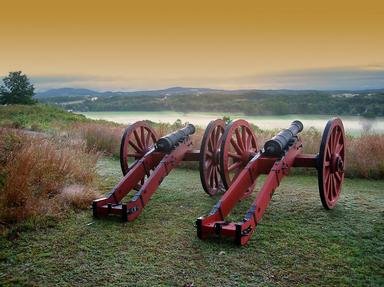Quiz Answer Key and Fun Facts
1. Did the Confederate States of America award Medals of Honor during the Civil War?
2. Of the 2,300 chaplains who served with the Union Army, only 4 received the Medal of Honor. One was known as "The Angel of Stone's River". The Battle of Stone's River occurred on New Year's Eve, 1862. Where is Stone's River?
3. Brigadier General Oliver Otis Howard was awarded the Medal of Honor for leading his New York brigade in a charge during which he lost his right arm. Howard was a staunch abolitionist. He founded a university that bears his name, Howard University. Where is Howard University?
4. William Appleton enlisted in the Union Army at age 19. He fought through First and Second Manassas, Fredericksburg, the Peninsula Campaign and Gettysburg, after which he joined a newly formed unit, the 4th U.S. Colored Infantry as a Second Lieutenant. He received his medal for valor at the Battle of Chaffin's Farm. What campaign was this battle a part of?
5. One of the youngest Medal of Honor recipients was 14-year-old John Anglin (sometimes spelled Angling). He was a cabin boy aboard the side-wheel gunboat USS Pontoosuc. His ship was part of a squadron which attacked Confederate Fort Fisher in January 1865. Where is Fort Fisher?
6. Even into the 21st century, there was only one woman to receive the Medal of Honor. She was a Union Army surgeon, woman's rights activist, abolitionist, spy, and prisoner of war. Who was this courageous woman?
7. A majority of the Medals of Honor awarded by the Union army during the Civil War were issued for what one particular act of courage?
8. How many stars were in the Confederate flag that was carried into battle?
9. Sergeant William Carney was the first black soldier to win the Medal of Honor. He was attached to an all-black regiment that was portrayed in the 1989 movie "Glory". What was the name of the regiment?
10. Samuel Robertson was a 19-year-old private who received the Medal of Honor for being 1 of 22 men to take part in a daring raid deep in enemy territory. He has the distinction of being the first American soldier to receive the Medal of Honor posthumously. What name was given to the raid that took place at Big Shanty, Georgia, in 1862?
Source: Author
ncterp
This quiz was reviewed by FunTrivia editor
trident before going online.
Any errors found in FunTrivia content are routinely corrected through our feedback system.
